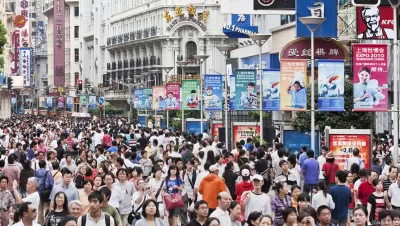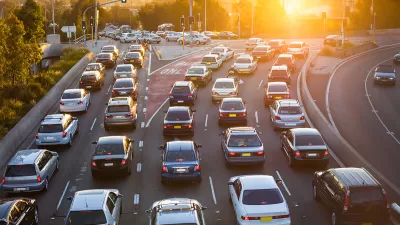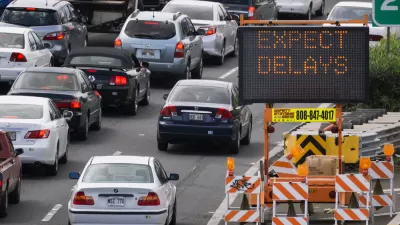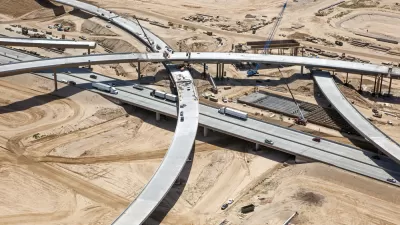A study comparing urbanization and per capita GDP between 1980 and 2011 questions common assumptions about the connections between economic growth and cities.

Alex Theg writes of a new study by researchers in China and published in PLOS ONE that complicates the conventional thinking that leads to national governments and international development agencies to pursue accelerated urbanization in the hopes of spurring economic growth. "Simply attract people into the cities, the thinking goes, and then cash in on the forthcoming economic benefits of a largely urban population."
The study, titled "The Global Pattern of Urbanization and Economic Growth: Evidence from the Last Three Decades," found no correlation between the rates of urbanization and economic growth. "In other words, fast urban growth doesn’t always translate into fast GDP growth, as witnessed by the graph below," explains Theg.
"The authors of the study argue that GDP growth may create conditions that organically drive migration from rural to urban areas, but the assumption that urbanization will necessarily drive strong economic growth may be false."
So if urbanization doesn't correlate to urbanization, what does? "Citing other work, the authors suggest that instead of trying to move people into cities, governments and development agencies should focus on creating a mobile workforce, ensuring broad access to goods and markets, implementing government policies that support commerce, and investing in infrastructure."
FULL STORY: Does Urbanization Always Drive Economic Growth? Not Exactly…

Alabama: Trump Terminates Settlements for Black Communities Harmed By Raw Sewage
Trump deemed the landmark civil rights agreement “illegal DEI and environmental justice policy.”

Planetizen Federal Action Tracker
A weekly monitor of how Trump’s orders and actions are impacting planners and planning in America.

The 120 Year Old Tiny Home Villages That Sheltered San Francisco’s Earthquake Refugees
More than a century ago, San Francisco mobilized to house thousands of residents displaced by the 1906 earthquake. Could their strategy offer a model for the present?

Indy Neighborhood Group Builds Temporary Multi-Use Path
Community members, aided in part by funding from the city, repurposed a vehicle lane to create a protected bike and pedestrian path for the summer season.

Congestion Pricing Drops Holland Tunnel Delays by 65 Percent
New York City’s contentious tolling program has yielded improved traffic and roughly $100 million in revenue for the MTA.

In Both Crashes and Crime, Public Transportation is Far Safer than Driving
Contrary to popular assumptions, public transportation has far lower crash and crime rates than automobile travel. For safer communities, improve and encourage transit travel.
Urban Design for Planners 1: Software Tools
This six-course series explores essential urban design concepts using open source software and equips planners with the tools they need to participate fully in the urban design process.
Planning for Universal Design
Learn the tools for implementing Universal Design in planning regulations.
Clanton & Associates, Inc.
Jessamine County Fiscal Court
Institute for Housing and Urban Development Studies (IHS)
City of Grandview
Harvard GSD Executive Education
Toledo-Lucas County Plan Commissions
Salt Lake City
NYU Wagner Graduate School of Public Service





























